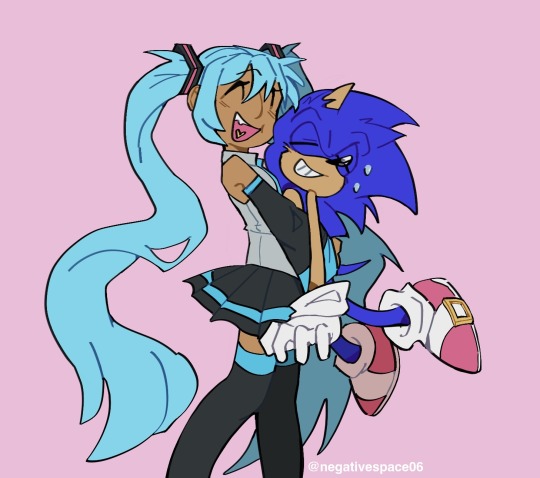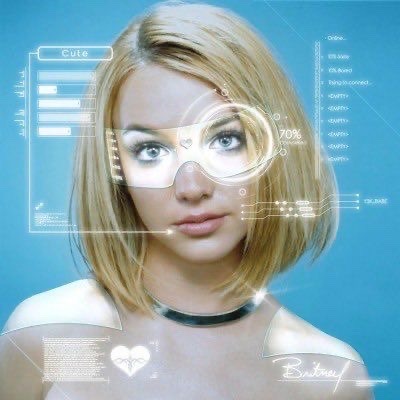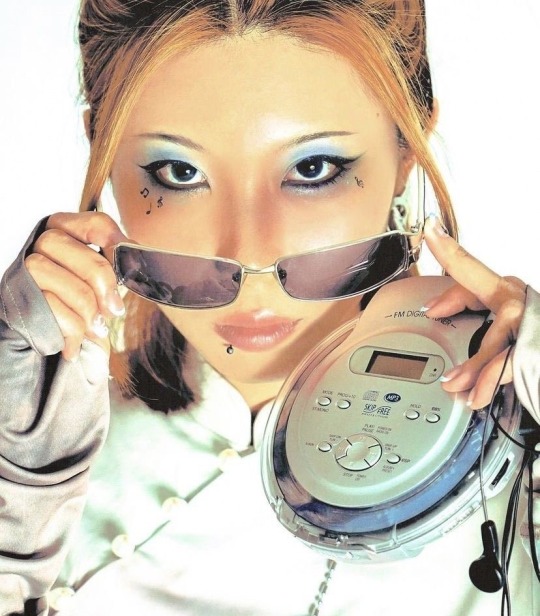#Internet of the future
Explore tagged Tumblr posts
Text

these guys again
#sonic#vocaloid#crypton future media#sonic the hedgehog#hatsune miku#she holds him like a teddy bear#gonna be that guy that draws miku and sonic together all the time#that’s what the internet is for right#my art
5K notes
·
View notes
Text










the futuristic era 🔮
#2000s#nostalgia#y2k#2000s nostalgia#2000s aesthetic#2000s fashion#late 2000s#2000s music#2000s style#early 2000s#2000s web#2000s core#britney spears#future#futuristic city#futurism#cyber y2k#cybercore#y2k vibes#y2kcore#y2k nostalgia#y2k aesthetic#y2k fashion#y2k style#tumblr y2k#2000s internet#xtina#cyber#internet#tlc
6K notes
·
View notes
Text



green
#my art#free! iwatobi swim club#free! eternal summer#free! dive to the future#free! fanart#free!#makoto tachibana#yamazaki sousuke#hiyori tono#im DONe oh my god i didnt think i could do it#looks at date what do u meAN these only took a week i feel like ive aged 30 years working on these#makoto took the longest by far like th angle the water the FISH shoutout to the blur tool fr i would die without her#also let me tell u a story. the entire time i was working on makoto and hiyori i STILL had no internet#so not only was i fighting the csp offline usage limit i also couldnt download any new brushes so guess who rawdogged the willow and kelp#nothin but a bamboo leaf brush a flat chisel and a dream#these r easily the most in-depth backgrounds ive tackled in a While and i honestly think they turned out rly well all things considered#makoto has 2 b my fav for obvious reasons but as a set i think they r all very strong and cohesive im so !!! pats self on back#sousuke tho is sadly th latest instalment of hina refuses to learn csp perspective tool.. dont look at my diagonals dont LOOK at them >:(((#it's always more apparent w indoor settings sighs gomen sousuke at least u look great in the patient gown :'> resident hospital hottie#ANYWAY ever since tht one free!/colour theory post i have been rotating these three in my head nonstop they make me in sain#so this is my take on them and green this is my love letter to the right hand men of the free cast#and hiyori /j#i jest he's grown on me he has male manipulated his way up from the bottom tier i have been charmed by his petty instigator tendencies#this is what happened to ikuya kirishima hashtag never forget
1K notes
·
View notes
Text

#aesthetic#my own post#art#anime#2000s internet#gif#my gif#meitantei conan#detective conan#case closed#anime movie#rain#vaporwave#night rain#city night#city pop#stop lights#semaforo#semáforo#retrowave#retro futurism#vibez#jazz vibes#lofi#lofi anime
2K notes
·
View notes
Text

Teal Translucent-Shelled Wired PS2 Controller
#internetcore#webcore#cybercore#futurecore#y2kcore#y2k#y2k nostalgia#cyber y2k#y2k aesthetic#early 2000s#2000s web#2000s internet#2000s nostalgia#2000s#2000s aesthetic#futuristic#futurism
6K notes
·
View notes
Text

ID: Zuko on the left and sokka on the right. From avatar, the last air bender from the waist up and aged up. They have their back turned to the viewer and are facing each other so only their profile is visible. They are looking lovingly into each other's eyes. sokka is resting his left arm on zukos shoulder, holding zukos jaw. His index fingers brushing underneath a cut up hair strand. zuko holds with his right hand on sokkas back. His left hand is placed over sokkas wrist, holding a bracelet made out of zukos cut off hair between his two fingers. End ID
i regrett not making zukos robe seethrough again. but... uhm.... i didn't mean to make this complicated again?
----- if you want to deal with all my reblogs may I direct your attention to my side only my artworks blog?
@chiptrillino-art
#atla#zukka#sokka#zuko#listen uhm... the stick figures on sokkas arm are for each of his family members#and uh... idk i have nothing to add#future chip here after i messed up on twitter...#fixed the mistakes. thisis the only valid internet version!!!#also you didn't see anything on twitter no no no no spelling mistakes there!
14K notes
·
View notes
Photo

New Post has been published on https://www.knewtoday.net/exploring-web-3-0-the-rise-of-decentralized-social-platforms/
Exploring Web 3.0: The Rise of Decentralized Social Platforms

Welcome to the world of Web 3.0, where the Internet is evolving into a decentralized and user-centric ecosystem. In this new era, traditional social media platforms are being reimagined, giving rise to innovative and decentralized social sites. These platforms are built on emerging technologies like blockchain, aiming to empower users with greater control over their data and online interactions.
In this article, we will delve into the concept of Web 3.0 and explore some of the popular decentralized social sites that are shaping the future of social networking. We will examine platforms like Steemit, Mastodon, Solid, Scuttlebutt, and Handshake, each offering unique features and approaches to foster a more open, transparent, and user-driven online experience.
Join us on this journey as we dive into the world of Web 3.0 social sites, discovering how they are revolutionizing social networking and challenging the status quo. Get ready to embrace a new era of digital interactions, where users have the power to shape their online presence and reclaim ownership of their data.
Understanding Web 3.0: The Evolution of the Internet
Web 3.0 is the next phase of internet development, representing a paradigm shift from the current centralized model to a more decentralized and user-centric approach. It aims to address some of the limitations and concerns of Web 2.0, such as data privacy, control, and the dominance of tech giants.
In Web 3.0, the focus is on empowering users and giving them greater control over their data and online interactions. Decentralization plays a crucial role in this vision, enabled by technologies like blockchain. Web 3.0 seeks to create a more open, transparent, and secure internet ecosystem where individuals have ownership and agency over their digital presence.
Key aspects of Web 3.0 include:
Decentralization: Web 3.0 leverages decentralized technologies, such as blockchain, to distribute data and authority across a network of participants rather than relying on centralized entities.
User Control: Web 3.0 emphasizes user ownership and control over personal data, enabling individuals to decide how their information is shared and used.
Interoperability: Web 3.0 aims to establish interoperability among various platforms, allowing seamless data transfer and interaction between different applications and services.
Openness and Transparency: Web 3.0 promotes transparency by making data and algorithms more accessible, enabling users to understand and verify how platforms operate.
Trust and Security: Through cryptographic protocols and consensus mechanisms, Web 3.0 enhances trust and security, reducing the reliance on third-party intermediaries.
Web 3.0 is still an evolving concept, and its full realization is yet to be achieved. However, it holds the potential to revolutionize the internet by placing users at the center and transforming how we interact, transact, and share information online.
The Promise of Decentralization: Empowering Users
Decentralization is a fundamental principle and promise of Web 3.0, offering numerous advantages and transformative potential. Here are some key promises and benefits associated with decentralization:
Enhanced User Empowerment: Decentralized systems aim to empower individuals by giving them greater control over their data, online identity, and digital assets. Users are no longer at the mercy of centralized entities that dictate terms and conditions.
Data Privacy and Security: Centralized platforms often collect and store vast amounts of user data, raising concerns about privacy and security. Decentralization distributes data across a network, reducing the risk of single points of failure and unauthorized access. Users have more control over their data, deciding what to share and with whom.
Reduced Intermediaries: Decentralized systems aim to eliminate or minimize the need for intermediaries, such as social media companies or financial institutions. By leveraging blockchain technology and smart contracts, users can directly interact and transact with each other, reducing costs, delays, and dependency on third parties.
Censorship Resistance: Centralized platforms have the authority to moderate and censor content, which can raise concerns about freedom of expression. Decentralized platforms strive to provide a more censorship-resistant environment, where content moderation decisions are made collectively or by consensus, reducing the potential for biased or arbitrary censorship.
Community Governance: Decentralized systems often involve community governance models, where decision-making power is distributed among participants. This allows users to have a say in the development, rules, and direction of the platform, fostering a more democratic and inclusive environment.
Interoperability and Seamless Experiences: Decentralization enables interoperability between different platforms and applications. Users can seamlessly interact, transfer data, and utilize services across various decentralized ecosystems, creating a more connected and integrated digital experience.
Innovation and Openness: Decentralized systems encourage innovation by providing open-source protocols and standards. Developers can build on existing infrastructure, contributing to the growth and evolution of the ecosystem as a whole.
While decentralization offers promising benefits, it also presents challenges such as scalability, governance complexities, and user experience design. However, the pursuit of decentralization continues to shape the future of the Internet, providing an alternative model that prioritizes individual empowerment, privacy, and open collaboration.
Blockchain Technology: Enabling Web 3.0 Social Platforms
Blockchain technology is a foundational component of Web 3.0 and plays a significant role in enabling decentralization, security, and trust in various applications. It is a distributed ledger system that records and verifies transactions across a network of computers, known as nodes. Here are some key aspects of blockchain technology:
Decentralization: Blockchain operates in a decentralized manner, where multiple nodes participate in validating and maintaining the integrity of the ledger. This decentralized consensus mechanism removes the need for a central authority, providing transparency and resilience.
Immutable and Transparent Ledger: Transactions recorded on a blockchain are permanent and tamper-proof. Once a transaction is added to the blockchain, it becomes extremely difficult to alter or manipulate the data, ensuring the integrity of the system. This transparency allows users to verify transactions and builds trust within the network.
Cryptographic Security: Blockchain uses advanced cryptographic techniques to secure transactions and data. Each transaction is cryptographically linked to the previous transaction, forming a chain of blocks. This makes it computationally impractical to modify past transactions without the consensus of the network.
Smart Contracts: Smart contracts are self-executing agreements coded on the blockchain. They automatically execute predefined actions when specific conditions are met. Smart contracts enable trustless and decentralized execution of agreements, eliminating the need for intermediaries and providing automation and transparency.
Tokenization: Blockchain technology facilitates the creation and management of digital tokens. These tokens can represent various assets, such as cryptocurrencies, digital collectibles, or even real-world assets like real estate or shares. Tokenization enables fractional ownership, increased liquidity, and new business models.
Public and Private Blockchains: Public blockchains like Bitcoin and Ethereum are open to anyone and rely on a distributed network of nodes for consensus. Private blockchains, on the other hand, are permissions and restrict access to a specific group of participants. They are often used by enterprises for internal purposes, maintaining privacy and control over data.
Scalability and Interoperability: Blockchain technology has faced challenges with scalability, particularly in public blockchains. However, various solutions such as layer-2 protocols and sharding are being developed to address these issues. Interoperability protocols are also being explored to enable seamless communication and interaction between different blockchains.
Blockchain technology has far-reaching implications beyond cryptocurrencies, extending to areas such as supply chain management, healthcare, finance, voting systems, and more. Its decentralized nature, security features, and ability to enable trust and transparency have the potential to revolutionize various industries and reshape the way we exchange value and interact online
Steemit: Rewarding Content Creation and Curation
Steemit is a blockchain-based social media platform that was launched in 2016. It operates on the Steem blockchain and provides users with the opportunity to create and curate content while earning cryptocurrency rewards. Here are some key features and aspects of Steemit:
Content Creation and Curation: Steemit allows users to create and publish content in the form of articles, blog posts, videos, and more. Users can also curate content by upvoting and commenting on posts they find interesting or valuable.
Steem Cryptocurrency and Rewards: Steemit has its native cryptocurrency called Steem. Users can earn Steem tokens by creating and curating content. The rewards are distributed based on the popularity and quality of the content, as determined by the community through upvotes and engagement.
Decentralized and Transparent: Steemit operates on a decentralized blockchain, ensuring transparency and immutability of content and transactions. Blockchain technology enables a trustless environment, where users have control over their data and interactions.
Reputation System: Steemit has a reputation system that measures the credibility and influence of users based on their activity and engagement on the platform. This reputation score helps in determining the weightage of their votes and the visibility of their content.
Community Engagement: Steemit encourages community engagement and collaboration. Users can follow each other, join communities based on shared interests, and participate in discussions. The platform provides an opportunity for users to connect and build relationships with like-minded individuals.
Monetization Opportunities: Steemit provides users with the opportunity to monetize their content. Successful and popular creators can earn significant rewards in the form of Steem tokens, which can be exchanged for other cryptocurrencies or fiat currencies.
Open Source and Development Community: Steemit is an open-source project, allowing developers to contribute to its development and create additional features and applications around the Steem blockchain. This fosters innovation and the growth of the ecosystem.
It’s important to note that while Steemit gained popularity as one of the early blockchain-based social media platforms, the landscape of Web 3.0 and decentralized social platforms is constantly evolving. There may be newer platforms or updates to existing ones that provide similar or enhanced features compared to Steemit.
Mastodon: Building Federated Communities
Mastodon is a decentralized, open-source social networking platform that operates on the principles of federation. It was launched in 2016 as an alternative to centralized social media platforms, offering users greater control over their data and fostering community engagement. Here are some key aspects of Mastodon:
Federation: Mastodon operates on a federated model, where multiple servers called “instances” are interconnected. Each instance is independently operated and can have its own rules and community guidelines. However, users from different instances can interact and follow each other, creating a decentralized network.
Decentralization and User Control: Mastodon emphasizes decentralization and user control over data. Instead of relying on a central server, user data is distributed across multiple instances, reducing the dependency on a single entity. Users can choose the instance that aligns with their preferences or even set up their own instance.
Timeline and Posts: Similar to other social media platforms, Mastodon allows users to post updates, photos, videos, and links. These posts appear in the users’ timelines and can be viewed and interacted with by their followers.
Privacy and Moderation: Mastodon gives users control over their privacy settings. They can choose to make their posts public, limited to their followers, or even private. Instances can also establish their own moderation policies to ensure a safe and respectful environment.
Community Engagement: Mastodon fosters community engagement by allowing users to follow each other, interact through comments and mentions, and participate in discussions. Users can discover and join various communities based on shared interests by following relevant accounts and hashtags.
Open Source and Interoperability: Mastodon is an open-source project, meaning its source code is freely available for inspection and modification. This encourages transparency, innovation, and the development of compatible applications and extensions.
Mobile and Desktop Apps: Mastodon has a range of mobile and desktop applications that allow users to access the platform from different devices. These apps provide a user-friendly interface for browsing timelines, posting updates, and engaging with others.
Mastodon has gained popularity as a decentralized and privacy-focused alternative to traditional social media platforms. Its federated nature allows for diverse communities and instances to exist while still providing interconnectivity and communication between users.
Solid: Taking Control of Your Personal Data
Solid is an open-source project and web decentralization initiative led by World Wide Web inventor Sir Tim Berners-Lee. It aims to reshape the way the web works by giving users control over their personal data and enabling them to choose how and where their data is stored and accessed. Here are some key aspects of Solid:
Personal Data Ownership: Solid puts individuals in control of their personal data. Instead of storing data on centralized servers owned by companies, Solid allows users to store their data in personal online data stores, called Pods. Users have full ownership and control over their Pods, deciding who can access their data and under what conditions.
Pod-Based Architecture: Solid follows a pod-based architecture, where data is stored in Pods hosted on servers of the user’s choice. Each Pod represents a user’s personal data store, which can be hosted on their own server or by a trusted service provider. This distributed approach ensures data privacy, security, and user empowerment.
Linked Data Principles: Solid utilizes Linked Data principles to enable interoperability and data sharing between different applications and Pods. Data stored in Pods is structured using semantic web technologies, making it machine-readable and allowing for seamless integration and aggregation of data across platforms.
Reusable Data and Applications: With Solid, users can grant permissions to different applications to access and utilize their data stored in Pods. This data interoperability allows for the creation of reusable applications that can leverage user data with explicit consent, promoting data portability and reducing data silos.
Privacy and Security: Solid emphasizes privacy and security by design. Users have granular control over their data, determining who can access specific pieces of information within their Pods. Solid also supports encryption and authentication mechanisms to ensure secure data storage and access.
Developer-Friendly: Solid provides developers with a set of open standards, protocols, and application programming interfaces (APIs) to build Solid-compliant applications. This encourages the development of a decentralized ecosystem of applications that respect user data rights and can seamlessly interact with Pods.
The vision behind Solid is to enable a more user-centric, privacy-preserving, and interoperable web, where individuals can reclaim control over their data and choose how they interact with online services. By decentralizing data storage and facilitating data ownership, Solid aims to address concerns related to data privacy, surveillance, and user empowerment in the digital age.
Scuttlebutt: Privacy-Focused Offline Social Networking
Scuttlebutt is a decentralized peer-to-peer social networking protocol and platform that focuses on privacy, offline access, and community building. It allows users to connect and communicate with others directly, without relying on a centralized server. Here are some key aspects of Scuttlebutt:
Decentralization: Scuttlebutt operates in a decentralized manner, with no central server or authority. Users store their data locally on their devices and share it with others through a peer-to-peer network. This architecture promotes resilience, privacy, and independence from centralized platforms.
Offline Access: One of the unique features of Scuttlebutt is its ability to work offline. Users can compose messages, update their profiles, and interact with others even when they don’t have an internet connection. When they come back online, their data is synchronized with other users’ devices.
Privacy and Security: Scuttlebutt emphasizes privacy by default. Users control their own data and can choose what information to share with others. Communication on Scuttlebutt is encrypted, ensuring that messages and data remain private and secure.
Community and Relationships: Scuttlebutt fosters the formation of communities and relationships through a concept called “pubs.” Users connect to pubs, which act as hubs for sharing and discovering content from other users within the network. Pubs enable users to find and follow people with similar interests.
Synchronization and Replication: Scuttlebutt uses a process called “gossiping” to synchronize data across the network. Devices share updates with each other, replicating and propagating changes. This enables users to have a consistent view of the network, even with intermittent or limited connectivity.
Extensibility and Modularity: Scuttlebutt is designed to be extensible, allowing developers to build custom applications and modules on top of the protocol. This flexibility enables the creation of diverse and specialized social applications that cater to different user needs.
Open Source: Scuttlebutt is an open-source project, which means its code is available for anyone to inspect, modify, and contribute to. This promotes transparency, innovation, and community-driven development.
Scuttlebutt provides an alternative approach to social networking, focusing on user privacy, community building, and offline accessibility. Its decentralized architecture and emphasis on user control aim to address concerns associated with centralized social media platforms and promote a more resilient and user-centric internet experience.
Handshake: Decentralized Domain Name System
Handshake is a decentralized, blockchain-based protocol that aims to create a more secure, censorship-resistant, and decentralized internet naming system. It introduces a new peer-to-peer root DNS (Domain Name System) that replaces the traditional hierarchical DNS system. Here are some key aspects of Handshake:
Decentralized Naming System: Handshake aims to decentralize the process of domain name registration and ownership. It allows users to register top-level domains (TLDs) directly on the Handshake blockchain, removing the need for centralized domain registrars. This enables greater ownership and control of domain names.
Blockchain Technology: Handshake operates on its own blockchain, which is a distributed and immutable ledger that records domain name ownership and transactions. The blockchain ensures transparency, security, and censorship resistance, as changes to domain records are recorded and verified by network participants.
Name Auctions: Handshake introduces a unique name auction mechanism to allocate domain names. Users can bid on and acquire domain names through an open and transparent auction process. This helps prevent domain squatting and promotes fair and competitive ownership of domain names.
Community Governance: Handshake’s governance model involves the community of Handshake token (HNS) holders. They can participate in decision-making processes regarding protocol upgrades, modifications, and policy changes. This allows for a more inclusive and decentralized approach to managing the naming system.
Handshake Tokens (HNS): Handshake has its native cryptocurrency called Handshake Tokens (HNS). These tokens are used for bidding on domain names, participating in auctions, and incentivizing network participants who validate and secure the blockchain.
Censorship Resistance: Handshake aims to provide a more censorship-resistant internet naming system. Since the ownership and control of domain names are decentralized, it becomes difficult for any centralized authority to censor or manipulate domain registrations.
Interoperability: Handshake is designed to be compatible with existing DNS infrastructure, ensuring interoperability with the traditional Internet naming system. This allows Handshake domain names to be accessed by users on regular web browsers without any additional software or plugins.
Handshake seeks to challenge the centralized nature of traditional domain name systems by providing a decentralized alternative. By leveraging blockchain technology and community governance, it aims to create a more inclusive and secure naming system for the internet, empowering individuals and reducing reliance on centralized authorities.
Challenges and Opportunities in the Web 3.0 Social Landscape
Challenges and opportunities in the Web 3.0 social landscape are shaped by the shift towards decentralization, user ownership, and the emergence of new technologies. Here are some key challenges and opportunities:
Challenges:
User Adoption: One of the main challenges for Web 3.0 social platforms is attracting a critical mass of users. Shifting users from established centralized platforms to decentralized alternatives requires education, user-friendly interfaces, and compelling features that provide clear advantages over traditional platforms.
Scalability: Achieving scalability in decentralized networks is a significant challenge. As the user base and activity increase, maintaining fast and efficient network performance becomes crucial. Web 3.0 social platforms need to address scalability concerns to handle growing user demands.
User Experience: Providing a seamless and intuitive user experience is vital for Web 3.0 social platforms. Designing user interfaces that are as intuitive and familiar as centralized platforms can help onboard users more effectively. Improving user experience across different devices and applications within the decentralized ecosystem is essential for widespread adoption.
Interoperability: Ensuring interoperability between different Web 3.0 social platforms is a challenge. Users should be able to interact and share content seamlessly across different decentralized networks. Developing open standards and protocols that enable interoperability can foster a more connected and inclusive Web 3.0 social landscape.
Regulatory Environment: Web 3.0 social platforms may face regulatory challenges as governments and regulatory bodies adapt to decentralized technologies. Compliance with data protection, privacy, and financial regulations can be complex, and platforms need to navigate these legal frameworks to ensure long-term sustainability.
Opportunities:
Data Privacy and Ownership: Web 3.0 social platforms offer opportunities to address privacy concerns by enabling users to have greater control over their personal data. By embracing decentralized architectures and technologies like blockchain, users can retain ownership of their data and choose how it is shared and utilized.
Censorship Resistance: Web 3.0 social platforms can provide an opportunity for users to express themselves freely without the risk of censorship or content removal by centralized authorities. Decentralized networks and protocols offer a more resilient and censorship-resistant environment for open communication.
Monetization and Tokenization: Web 3.0 social platforms introduce new possibilities for users to monetize their content and participate in the value-creation process. Through tokenization and decentralized finance (DeFi) mechanisms, users can earn rewards, receive micropayments, and engage in peer-to-peer transactions, creating new economic opportunities.
Community Governance: Web 3.0 social platforms can empower users by involving them in the decision-making process through community governance models. Users can have a say in platform rules, feature development, and policy changes, fostering a sense of ownership and participation.
Innovation and Collaboration: Web 3.0 social platforms provide a fertile ground for innovation and collaboration. Developers can build on open protocols and standards, creating new applications, features, and integrations. Interactions between different decentralized platforms can lead to novel use cases, fostering creativity and experimentation.
Trust and Transparency: Web 3.0 social platforms can address trust and transparency concerns by leveraging decentralized technologies. Immutable ledgers, smart contracts, and transparent governance models enhance transparency and accountability, building trust between users and the platform.
The Web 3.0 social landscape presents both challenges and opportunities as it evolves towards decentralization and user ownership. Overcoming technical and adoption challenges while leveraging the benefits of privacy, censorship resistance, and user empowerment can pave the way for a more inclusive and user-centric social web.
#Blockchain technology#Data ownership#Decentralized social platforms#Internet of the future#Mastodon#Privacy#Scuttlebutt#Social media revolution#Solid#Steemit#Web 3.0#Web development
0 notes
Text

#windows 98#windows 95#old tech#old pc#vaporwave#retrowave#retro futurism#futuristic#cybercore#early internet#webcore#cyber blue#cyber y2k#y2k aesthetic#y2kcore#nostalgic#nostalgia#nostalgiacore
1K notes
·
View notes
Text
I don't even know both of the train guys from that one pokemon game but it's insane to me that they just stuck one of them in Pokemon Arceus with no proper explanation. Time travel one half of a fuckin train guy twin pair and stick him so far back in the past that its legend in his original time. They don't even have trains here. What is he doing here??? Why did you separate him???

Train guy subjected to Torment Nexus for no goddamn reason, universe does not elaborate
#pokemon bw#ingo#subway boss ingo#that trope of separating an inseperable pair but it'e a fuckin subway boss from a pokemon game who gets yeeted to the fuckin dark ages#pokemon legends arceus#i wonder if the other brother is gonna get yeeted to the legends za game#they could have just made any character and had them fill this guy's role but they were like hey what do the Internet people like uhhh#the subway guys i guess but we only need one#he keeps his tattered ass jacket and hat bc they don't have the materials to fix them yet since FUTURE
368 notes
·
View notes
Text

Visa84
#cyberpunk#pop art#technology#science fiction#scifi#dystopia#retro computing#retro future#retro futurism#1984#dysopian#scifi art#art#80s#post internet#postinternet#digital#animation#looping#gif
637 notes
·
View notes
Text
*gives you a gay little kiss that feels like home*
#wlw#wlw mood#sapphic#lesbian#sometimes you may see a post from me and go:#why the fuck would she post that??#and wonder if i regret it#the answer is no <3#all my posts are bangers😤#esp this one#and that is NOT the exhaustion and lack of sleep talking#maybe it’s late and i have to be up#in five hours#and i came to the realization that ALL my kisses count as gay little kisses#and had to share that with the internet#okay and it’s a GOOD post😤😤😤😤#im not gonna see this at a time when im more sane and be like wtf#i’ll see it be like: wow that’s a great post#@ future me: u can fight me on this im right okay#god im so tired
3K notes
·
View notes
Text



these 3 and their weird catty love triangle have bewitched me body and soul
#my art#free!#free! fanart#free! dive to the future#free! iwatobi swim club#ikuya kirishima#asahi shiina#hiyori tono#I still do not have proper internet from my desktop but i found a workaround so WE'RE POSTING BABY#and thank god bc i was so antsy sitting on my dive to the future stockpile i want to post asaikuhiyo NOW#eternal summer is untouchable to me but i do love dive to the future a lot i love !!!!!! ikuya!!!! i love ASAHI!!!!#i wld die for asahi i wld lay down my life for him i was NOT expecting to be won over by one of free's peppy redheads but there he was#whoever at kyoto animation made the decision to give asahi built-in blush i am kissing u passionately on the mouth#ITS SO CUTE WHAT BIG BRAIN DESIGN#on top of th blushies i took th creative liberty 2 give him...freckles.......critical hit lethal damage i fear for my heart etc etc#and ikuya meowmeow i love him hes so BABY hes so . ruffles his hair tucks him in smooches his forehead#i did ikuya first in this set and tht was like over a week ago atp so im no longer super happy w the starry one unfortunately#but whatever man its fine idc this new render style takes too long#hiyori ...is winning me over slowly i will admit he makes my brain tick w how much his rls with ikuya makes me think#he's annoying and infuriating but in such a complex way i wish they did more w his arc#but all tht aside asahiyo beef sillies are so special to me they make me laugh so much i love how petty they are#puts them in their get along shirt
583 notes
·
View notes
Text

#aesthetic#city night#city lights#city scene#skyscraper#vaporwave#retro futurism#old vibes#jazz vibes#digimon adventure 02#2000#anime#retrowave#futurewave#idk wtf im saying but VIBES AND NOSTALGIA#my own post#art#2000s internet#digimon adventure#digimon#gif#my gif#city pop#vaporaesthetic
788 notes
·
View notes
Text
I’m not sure when exactly this happened, but I think it’s clear that the aro community really is a community, now.
For the longest time I’ve felt like we were still in stasis, not quite there; a proto-community, yes, but not quite a community. But we have more history now to lean back on, more of each other to talk to and laugh with and cry with and learn from. More people that’ll go forward and make a part of modern aro history. More people that believe us, believe in us, will stand with us if we ask them.
I wouldn’t consider myself an aro elder yet, though each year I’m surprised at how long aromanticism has been a part of my life, how long I’ve been free of doubt or insecurity about my aromanticism, how far we’ve come since I was questioning. Then again, when I was questioning, some of the people I looked up to for guidance were probably close to the age I am now, so I might be there sooner than I think.
And, I’m so so hopeful for all aros, young or old, new or not, because we’ve come so far. Day by day, progress is slow (and yes, it’s unfair, it should be so much faster), but looking back it feels fast. We are our own role models, the people we look up to for guidance. We carve our own path through life, making things up as we go. I used to find that terrifying, because I had no idea what the future would bring. But it’s actually amazing, because I can ignore all these silly “rules” and guidelines about what my life should be, and instead ask, “what do I want my life to be?”
Younger me, you have no idea how awesome your future is gonna be. I’m sorry about the pain and hardship you’ll go through first; it won’t be fair and you shouldn’t have to deal with it. But you’ll make it through, and one day you’ll be me. I can’t wait for you to get here.
#aromantic#aro#aspec#queer#lgbtq#original#text#can't believe i was busy on a day when aromantic got super trending#also on the topic of history: history is super important and we should make sure we're good custodians of it!#make backups of your tumblr blogs/wordpress sites/fanfiction/analytical essays/whatever!#save links into the internet archive/wayback machine!#future aros will thank us for every thing we save from link rot#current aros will thank us for keeping our resources alive and accessible
1K notes
·
View notes
Text






₊ ⊹ . ݁˖ . ݁ ݁₊ ⊹ . ݁˖ . ݁⋆⭒˚.⋆⭒˚.⋆ ݁₊ ⊹ . ݁˖ . ݁ ݁₊ ⊹ . ݁˖ . ݁⋆⭒˚.⋆⭒˚.⋆ ݁₊
#frutiger aero#frutiger aero aesthetic#frutiger aero moodboard#frutiger aesthetic#the future we were promised#2000s#2000s nostalgia#2000s internet#2000s web#2000s aesthetic#2000s blog#2000s core#2000s vibes#2000s technology#2000s tech#mid 2000s#late 2000s#00s#00s nostalgia#00s internet#00s web#00s aesthetic#00s blog#00s core#00s vibes#internet explorer#old internet#webcore#web core#internetcore
324 notes
·
View notes







